Veuve Clicquot Champagne
Questions about Veuve Clicquot? Discover our Veuve Clicquot FAQ page!Having become an internationally recognized brand with tremendous success, Veuve Clicquot traces its history back to the woman who...Read More
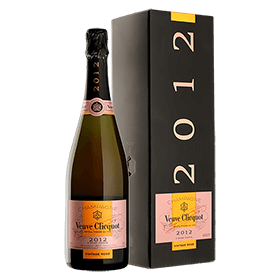

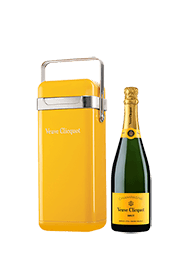
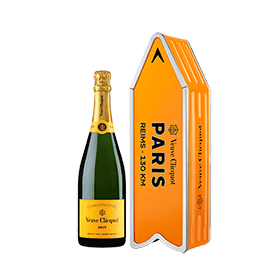

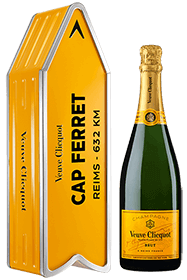
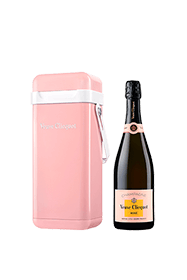
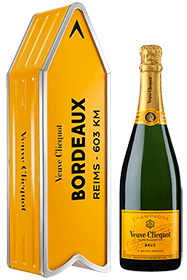
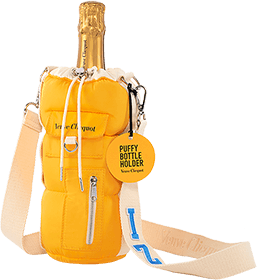
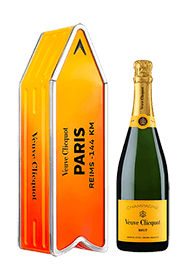
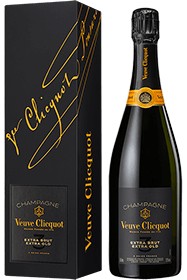

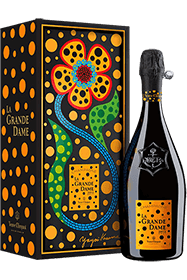
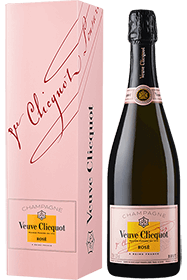


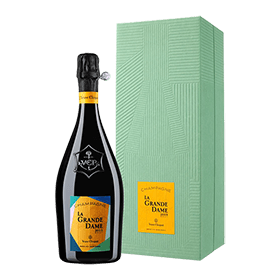
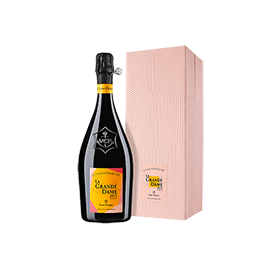

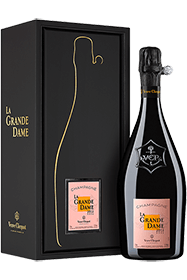
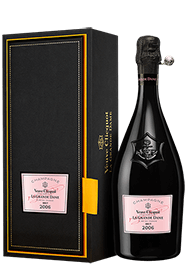
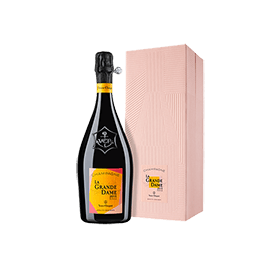

Veuve Clicquot Champagne | Master of Innovation
More so than perhaps any other Grande Maison de Champagne, Veuve Clicquot is defined by its spirit of innovation and entrepreneurship, the legacy of the House’s namesake matriarch, the visionary Widow Clicquot Ponsardin. A shrewd businesswoman and one of the most creative marketers of her epoch, Madame Clicquot transformed a fledgling family business into an internationally recognised luxury brand through a continuous stream of brilliant innovations that spanned her almost 60-year tenure at the House.

From the invention of the riddling table as a way to clarify champagne to the adoption of the eye-catching pantone 137C for the brand’s iconic dark-yellow label, Veuve Clicquot has led the way in the realms of winemaking, package design and product placement, paving the way for the rest of Champagne. The Veuve portfolio today stands as a testament to the originality of a brand eternally ahead of its time, offering brilliant and beautiful expressions of Champagne at its best.
The History of the Veuve Clicquot Champagne House
The Veuve Clicquot Champagne House was born in the year 1772 when Philippe Clicquot, a vineyard owner from a family of bankers and merchants, decided to turn his plots in Ambonnay and Bouzy into a small winemaking business. In 1801, the founder passed the reins of the company to his son Francois Clicquot who had married Barbe-Nicole Ponsardin just three years before. As the French Revolution was still raging at the time, the wedding took place in the depths of a cellar and the priest is said to have gifted to the couple a book by Dom Perignon. Francois Clicquot managed the business with skill, increasing sales all over Europe with help from his dedicated sales representative Louis Bohne. In October 1805, Francois died suddenly leaving Madame Clicquot a young widow (or “veuve” in French) with a three-year-old daughter. At the age of 27, the Veuve Clicquot Ponsardin convinced her father-in-law to let her run the family business.
A shrewd businesswoman, forward-thinking visionary and one of the first female entrepreneurs in the history of wine, Madame Clicquot is credited with elevating Veuve Clicquot from a fledgling family business to an internationally recognised Champagne House. Early on in her tenure, Madame Clicquot created a champagne exclusively from the 1810 vintage, which would become the very first recorded vintage champagne of the region. One year later, in 1811, the estate vineyards were blessed with an exceptional harvest believed to have resulted from a comet flying over the vineyards. This wine, dubbed “le vin de la comete” (or the Comet Vintage), was bottled with a cork marked by a star, as well as the initials VCP for Veuve Clicquot-Ponsardin.
Despite the desirable quality of these first few vintages, Madame Clicquot faced significant political and economic challenges in her early years at the head of the business. When the Russian tsar placed an embargo on French wines, she instructed Bohne to package the champagne bottles into coffee barrels. As soon as Napoleon was sent into exile, she swiftly chartered a Dutch ship to convey a huge order of bottles to a major Russian port on the Baltic coast. It arrived in time to celebrate the end of hostilities and was sold immediately. At that moment, Veuve Clicquot Champagne became a symbol of celebration among the Russians. A shrewd pioneer of brand positioning, Madame Clicquot also supplied her champagne to the Congress of Vienna, which convened in 1815 to determine the new boundaries of Europe, as well as to the parties that followed.
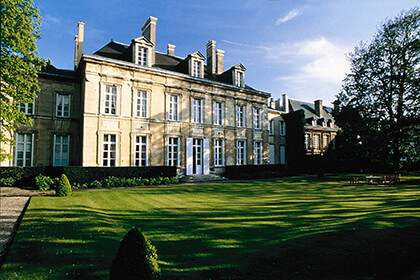
Madame Clicquot’s bold moves on the sales front were complemented by her close involvement in the production side of the business. In 1816, with the help of cellar master Antoine-Aloys de Muller, she perfected the art of champagne-making when she invented the riddling table. The latter is a kind of rack designed to hold bottles of champagne at an angle. The bottles would be rotated with a quarter-turn each day, allowing the lees to settle in the neck of the bottle and be easily removed, resulting in a crystal-clear liquid.
The process of riddling has since then been widely adopted by champagne houses across the region and with its invention Madame Clicquot came to be known as the La Grande Dame of Champagne, a nickname that would become immortalised by the creation of Veuve Clicquot’s La Grande Dame prestige cuvée in 1972 on the 200th anniversary of the House. In her later years, Madame Clicquot was aided by her business partner Mathieu-Edouard Werlé, who saved the company from financial ruin during the 1820’s. Madame Clicquot passed away in 1866 at the age of 89, leaving behind an incredible legacy never to be forgotten. In 1972, the House launched the Veuve Clicquot Business Woman Award, dedicated to the celebration of female entrepreneurship.
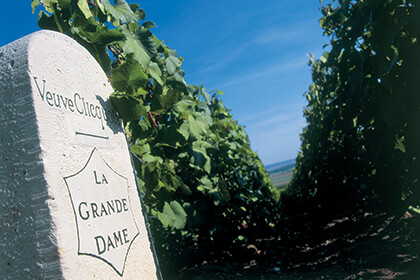
“Innovation” seems to have always been one of the key descriptors of the Veuve Clicquot Champagne House which has single-handedly contributed so much to the world of fine wine. One of the company’s greatest examples of innovation took place in the realm of marketing in 1877, with the trademark of a very distinctive and original yellow label used to dress bottles of Veuve Clicquot Champagne. This bold, eye-catching and memorable packaging allowed customers to demand and find the wines of the House more easily. The winemaking techniques employed by the House continued to evolve throughout the next century, with the acquisition of the crayeres (underground chalk cellars) in 1909. These crayeres would one day be listed by UNESCO as a World Heritage site.
In 1986, the Veuve Clicquot Champagne House entered a new chapter of its story with its acquisition by Louis Vuitton, which became Louis Vuitton Moet Hennessy (LVMH) in 1987. The luxury giant has catapulted the Champagne House to international stardom, furthering the company’s tradition of innovation while simultaneously also respecting its grand history.
The Veuve Clicquot Champagne Terroir
Today, the Veuve Clicquot Champagne House reigns over 390 hectares (963 acres) of vineyards, representing a collection of plots carefully assembled by vineyard directors throughout the House’s history. This vineyard is spread over an impressive 12 of the 17 total Champagne Grand Cru plots and 20 of the 44 Champagne Premiers Crus. In fact, 86% of the vines of Veuve Clicquot are classified either Grand Cru or Premier Cru of Champagne.
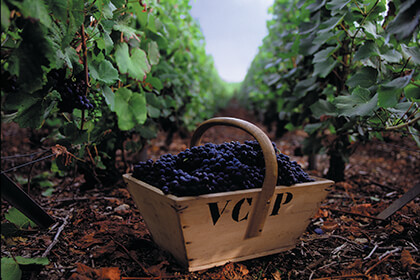
The Veuve Clicquot vineyard is planted with 47% Chardonnay, 36% Pinot Noir and 17% Pinot Meunier grapes. The vines can be found planted on hillsides, where they enjoy ideal sun exposure and a shallow chalky soil in which the fruit develops great complexity. The temperatures are quite cool here, allowing the fruit to maintain its refreshing natural acidity. For the past few decades, the Veuve Clicquot viticultural team have set their sights on sustainability, adapting eco-friendly methods, eliminating the use of chemical herbicides and pesticides, and grassing the earth between vine rows to encourage a natural biodiversity in the vineyard.
Estate-owned vineyards account for roughly 20% of the total fruit used to produce the champagnes of Veuve Clicquot. The rest comes from 400 carefully selected and trusted winegrowers, most of whom have been partnered with the House for several generations.
Winemaking at Veuve Clicquot Champagne
At Veuve Clicquot, the grapes are harvested by hand into short bins with a capacity of less than 50kg to prevent the delicate fruit from being crushed on its way to the winery. The fruit is pressed in whole bunches at one of the six Veuve Clicquot pressing centres. The grapes are divided by variety and plot and vinified separately in stainless steel vats with the alcoholic fermentation taking eight to ten days. Then, malolactic fermentation is carried out to soften the acidity of the wines. These roughly 700-800 base wine samples are tested and ranked regularly by the winemaking team, led by Cellar Master Didier Mariotti. Each year, the Tasting Committee chooses the blend from roughly 50 different crus, including reserve wines. The decision is also made whether or not to produce a vintage champagne in a given year.
After the blend is decided, the wine is dawn into bottles with dosage and yeasts added to trigger the “prise de mousse” process by which the carbon dioxide formed through secondary fermentation transforms the wine into a sparkling. The bottles are laid horizontally to age on lees (dead yeast cells) in a process known as autolysis, which lends yeasty flavours and greater complexity to the wine. The bottles are aged in the underground chalk crayeres of the House for up to seven years. During this time, the bottles are rotated either once or several times per day in order to collect dead yeast sediment in the neck of the bottle. Riddling of the La Grande Dame and large format bottles are still carried out by hand.
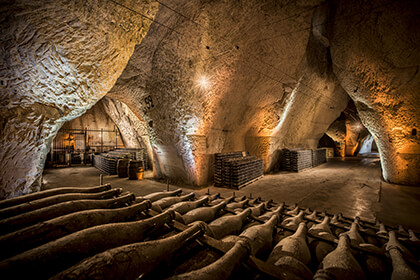
The final step is disgorgement, which is done by cooling the neck of each bottle down to -26° C and removing the cap to force out the deposit. At this point, a dosage (liqueur d’expedition) is added to the bottle, which determines the style (sweetness or dryness) of the champagne. The bottles are then corked and muzzled, before resting for a few months and finally being shipped out to champagne lovers around the world.
The Signature Style and Cuvées of Veuve Clicquot Champagne
True to its motto, “Only one quality, the finest,” the Veuve Clicquot Champagne House has crafted exquisite champagnes over the course of more than two hundred years, a legacy carried out through a line of only 11 Cellar Masters. The signature style of the House is one that combines strength and complexity in perfect harmony.
The Veuve Clicquot Yellow Label is the signature non-vintage brut champagne of the House, produced from roughly 30-45% reserve wines from 50 to 60 different crus. The blend is dominated by Pinot Noir, which gives it a certain structure, while Chardonnay lends it elegance and Meunier a touch of roundness. After a minimum of 3 years spent ageing in the cellar, the Veuve Clicquot Yellow Label offers the perfect combination of strength and silkiness, with rich yellow and white fruit aromas, along with vanilla and brioche notes on the nose. This cuvee serves as the ideal introduction to the signature style of the House.
The very first blended Rosé Champagne, created in 1818, the Veuve Clicquot Rosé Champagne is based on the signature blend of the Yellow Label but with 12% still red wine blended into the white wines for a touch of fruitiness. The House produces a non-vintage Demi-Sec cuvée with a dosage of 45 grams per litre. This slightly sweet champagne offers rich ripe fruits, tarte Tatin and caramel aromas.
The Veuve Clicquot Champagne House also produces a series of vintage champagnes only in the very best years. These Brut and Rosé vintage champagnes capture the essence of a single year. For example, the Veuve Clicquot Vintage Brut 2012 and Veuve Clicquot Vintage Rosé 2012 represent the House’s 66th vintage release, products of a growing season with an extremely challenging climate. The Vintage Rosé 2012 presents an aromatic intensity dominated by luscious red fruit, like strawberries and Morella cherries, along with touches of pepper and saffron on the finish.
The prestige cuvée of the House is the Veuve Clicquot La Grande Dame, which showcases the House’s flagship variety with over 90% of the perfectly balanced blend made up of Pinot Noir. The grand majority of the fruit comes from the historical Grand Cru vineyards of the House. This is a vintage champagne of great refinement and elegance, delicate yet powerful, firm yet subtle. On the nose, the La Grande Dame 2012 expresses white flower fragrances, as well as pear, apple and white peach. These are accentuated with fresh almond notes, along with toasted hazelnuts and honey.
Finally, the House produces a collection called Extra Brut Extra Old from a blend of prestigious old reserve wines, as well as their unique Rich Collection, designed with cocktails in mind.